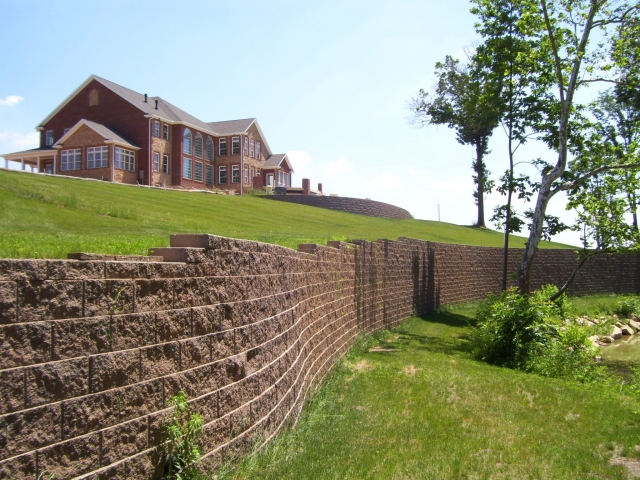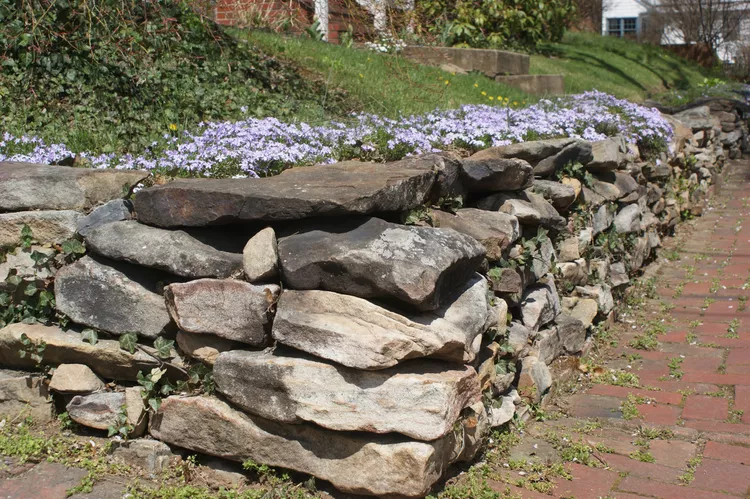When it comes to building a retaining wall that lasts, what you put underneath it is just as important as the wall itself. The base is the unsung hero of your landscape. It carries the weight, keeps things level, and ensures the entire structure stays put through rain, thaw, or time.
So, what’s the best base for a retaining wall? Let’s dig in (pun intended) and break it all down, from the myths around pea gravel to the real champions like crushed rock.
Why the Base Material Matters So Much
Think of your retaining wall like a house. You wouldn’t build your home on sand and expect it to stand for decades, right? The same principle applies here. A retaining wall is only as strong as its base.
A compacted, stable base:
- Prevents shifting and tilting
- Promotes proper drainage
- Extends the lifespan of the wall
Whether you’re dealing with heavy rainfall, freeze-thaw cycles, or soil movement, the right base material makes all the difference.
Top Recommended Materials for a Retaining Wall Base
Not all rocks are created equal. Here are the heavy hitters that most experts agree on:
1. 3/4″ Minus (Rock Screenings)
- Also known as “crushed stone with fines,”
- It compacts tightly and creates a solid, flat base.
- Ideal for block walls and DIY-friendly.
2. Crush and Run (ABC Stone)
- A mixture of crushed rock and stone dust.
- Great for compaction.
- Commonly used under roads and patios as well.
3. Paver Base
- Typically made from finely crushed stone.
- Easy to level and compact.
- Widely available at hardware stores like Lowe’s.
4. #57 or #78 Angular Stone
- Angular stones between 1/2 and 3/4 inch.
- Offers great drainage and resists shifting.
- Recommended in freeze-thaw climates (hello, Minnesota).
5. Class I, II, or III Backfill
- These are construction-grade aggregates.
- Follow specific gradation and compaction standards.
- Usually recommended by engineers for larger wall projects.
Avoid This Common Mistake: Using Pea Gravel
You’ve probably seen it recommended here and there, pea gravel for retaining wall bases. Sounds nice, right? Smooth, rounded, easy to shovel.
Wrong.
Pea gravel doesn’t compact. Those little round stones just roll around. As a result:
- The wall can shift over time
- Drainage becomes inconsistent
- Stability is compromised
Even Oregon State University’s Extension warns against using rounded rock. They note that round materials like pea gravel tend to dislodge under pressure.
That doesn’t mean pea gravel is useless. It’s great behind the wall for drainage. But under it? That’s a hard no.
Compaction: The Non-Negotiable Step
Even if you pick the perfect base material, skipping compaction is like skipping the gym for a month and expecting results.
You should:
- Dig a trench 4 to 6 inches deep (deeper for taller walls)
- Lay your chosen crushed rock in layers
- Compact each layer with a plate compactor
According to Allan Block’s Residential Installation Manual, crushed stone with angular edges locks together better than smooth gravel, providing critical support.
For walls over 4 feet, you may need a deeper base (up to 8 inches) and possibly even a geogrid reinforcement system.
Natural Stone vs Block Walls: Is There a Difference?
Yes, but not as much as you’d think.
For dry-stacked natural stone walls, some guides like World of Stones USA mention pea-sized gravel for ease of leveling. But most seasoned masons still prefer angular stone because it gives you a more stable, compactable foundation.
Block walls require angular, crushed gravel to ensure level placement and interlocking strength. These walls rely on tight rows that need to be placed on a flat, sturdy base.
Climate and Soil: Don’t Ignore Your Local Conditions
- Clay-heavy soil? Add a few inches of coarser rock to combat expansion.
- Rainy climate? Prioritize drainage with a base that won’t trap water.
- Cold winters? Stick to angular stone that won’t shift with frost.
For example, homeowners in the Midwest often opt for #57 stone because it allows water to pass while providing firm support against frost heave.
Tips for the Perfect Retaining Wall Base
- Compact in Layers: Don’t just dump in 6 inches at once. Lay in 2-inch increments and compact thoroughly.
- Use a Screed: Level it with a long board to avoid dips and high spots.
- Add a Drain Tile: A perforated pipe behind the wall helps manage water.
- Don’t Skip the Geotextile: If working with soft soil, place a geotextile fabric under the base to prevent mixing with native soil.
Summary Table: Best Rock Base Materials
| Material | Pros | Best Use |
| 3/4″ Minus | Excellent compaction, easy to level | DIY and pro block walls |
| Crush and Run | Great stability, affordable | Long-lasting DIY projects |
| Paver Base | User-friendly, fine particles | Patio + garden wall combos |
| #57/#78 Stone | High drainage, frost-resistant | Freeze-prone areas |
| Class I-III Backfill | Meets engineering specs | Tall or engineered walls |
| Pea Gravel | Drains well, does NOT compact | Drainage, not base |
Final Verdict
Don’t let a poor base ruin a beautiful retaining wall. While design and materials get all the glory, the foundation below holds everything together. Stick with crushed, angular stone compacted in layers, and your wall will stay strong, straight, and stress-free.
Stay grounded. Literally.









